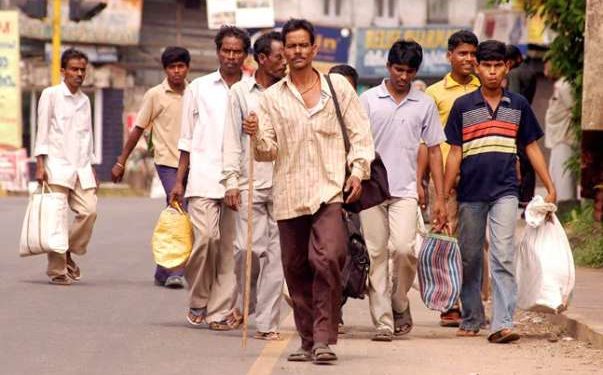COVID-19 has, by default, brought upfront the problems of migrant workers. The Central government is not just blissfully ignorant about the problems of this segment of the society but the government machinery seems to have completely written them off the records. It seems to have no clear data as regards their actual number or spread. The Labour Ministry does not have details of the number or the kind of existence they have. It may be concluded that those billions being spent on programmes such as Aadhaar and the more recent NPR and NRC are all pointless expenditure when a real time of stress befalls this country.
A large number of the inter-state migrants are, over time, getting integrated with the local life and settle down in cities, far from their homes. No doubt they live a hand-to-mouth existence. The little savings they send back home every month helps families survive. Their plights turned worse during the present month-long lockdown period. Many of them are young and are away from their families, found the sitting back in labour shelters without work and pay for weeks a deeply upsetting experience. They obviously yearned to get back to their homes. Their exasperation found echo not only in Anand Vihar of Delhi and Bandra in Mumbai but also in Surat and several other industrial, commercial and agricultural centres.
Their plight was, by far, the worst event during the present Covid-19-related lockdown times. In shelters, hundreds of workers live like animals, packed into small rooms and beaten by police and goons if seen outside. In most situations, with no money in hand, there is no one to care for their food and other basic requirements. Governments, which have abdicated their responsibility to attend the problems of this massive segment of the nation’s workforce, simply look the other way. Having ignored the existence of this essentially required mass of humanity, most governmental agencies are now able to do little in a huff.
Migrations from rural areas to urban sprawls were happening for the past few decades as cities grew in size and facilities increased even in slums. Successive governments both at the Center as well as in the States have continuously encouraged migration to help their business cronies to benefit from low paid work force. The educated white collar workforce in many states comprised migrants as well. Recent years have seen large-scale migrations of the lower level, skilled and semi-skilled workforce. In several states, they powered the development engine, be it in infrastructure, agriculture or industry. The workforce in farms of Punjab-Haryana was drawn largely from Bihar and UP. The last Census put the number of inter-state migrants at around 14 crores, which could only have increased with passage of time.
Delhi has a large migrant workforce, drawn from UP, Bihar, Assam Odisha and Bengal. Mumbai and Pune industrial areas have it too. Hyderabad’s recent growth was powered by migrant workforce as also the local poor. Kerala has some 2.5 million migrant workers, forming 10 per cent of the population, and largely drawn from Assam and Bengal. The Leftist government in Kerala stood out among other states by reaching out with help to the migrant labours, who all are called as “guest workers” by the state government. Over 1,000 camps were set up in districts across the state to provide them with free food and medicines during the lockdown period. Clearly, the Kerala government took it as an opportunity to prove its Leftist, pro-labour credentials while doing yeoman social service too..
Many of us forget that the migrant workforce in this country is doing a great service to the nation also in terms of national integration. Cities in the South, as also entire Kerala, have migrant workers from the eastern sector, omnipresent even in the streets all times of day and night. So with Delhi, where the demographic shift is highly pronounced in social terms and ended the long-held Punjabi domination. In Bangalore too large numbers of youths from the North-East are engaged in white collar jobs. The result is also that Hindi is increasingly infiltrating in the South at the cost of local languages. The dispersal and hopefully with no early return of these migrants may do some long term good to social structures that have got disturbed by the presence of these external work force.
The migrants were supposedly here to stay, as limitations of borders had been overcome by new opportunities for jobs in select areas – though not across the nation. The western sector was hyper-active, including Mumbai, Pune, Ahmedabad, as also Punjab and Haryana. So did Goa which used to be the principal destination for foreigners in leisure pursuits. So with Bangalore, the IT capital. Hyderabad too was in high growth gear, flush as it was with money sent in by expatriate population from the Gulf and the US. The eastern sector as a whole is let down, with failure of most urban centers to catch up with the growth process. Hence the flow of the workforce from the eastern sector to the other parts of the country may now change course.
The Union government has failed abjectly, prior to declaration of lockdown, in estimating the huge ocean of humanity constituting the work force that turns the wheels of development. Those human beings are going through hell at present. While their torture continues even while we read this, the nation’s planners also need to worry about how to bring back this work force to their work places that they so recently had to vacate under such duress. If they do not return soon, the economic revival of India could be long drawn.






































